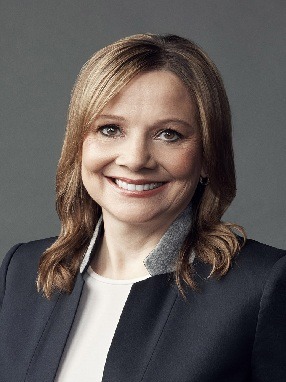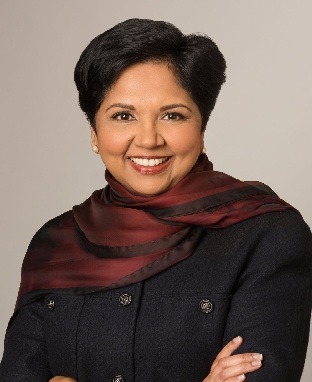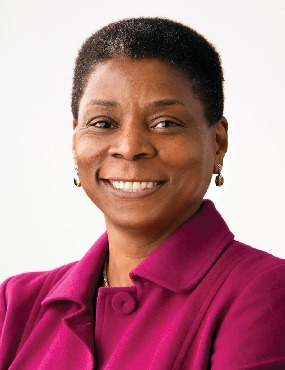Empowering Change: Breaking Glass Ceilings

EMPOWERING CHANGE: BREAKING GLASS CEILINGS
Why do leadership roles remain dominated by men? Despite qualifications, women and minorities often struggle to advance due to the invisible “glass ceiling.” Industries like technology, finance, and automotive remain heavily male-dominated, with executive roles still out of reach for many. Biases, lack of mentorship, and systemic barriers persist despite diversity efforts. This article explores the challenges of the glass ceiling and strategies for fostering truly inclusive workplaces. Breaking these barriers requires policy changes, leadership development, cultural shifts, and individual empowerment. True progress demands dismantling the biases and institutional constraints that hinder career advancement.
Challenges in Breaking the Glass Ceiling
Despite progress, many challenges continue to reinforce the glass ceiling, limiting career advancement for women and minorities. Implicit bias and stereotypes remain significant barriers, influencing hiring and promotion decisions. Women are often perceived as less capable leaders due to deep-rooted gender biases, making it harder for them to gain recognition and opportunities.
Workplace culture and norms in male-dominated industries also play a critical role. Informal networking, decision-making processes, and resistance to diversity initiatives can create exclusive environments that hinder equal access to leadership roles. Without proactive cultural shifts, these challenges persist, maintaining the status quo. A lack of mentorship and sponsorship further restricts career progression. While mentorship provides guidance, sponsorship is crucial, as it involves influential figures actively advocating for an individual’s advancement. Women and minorities often struggle to find such advocates, making it harder to break into executive roles.
Work-life balance challenges also disproportionately affect women, especially those balancing caregiving responsibilities. High-level positions often demand long hours, frequent travel, and flexibility factors that can create additional hurdles for women pursuing leadership roles. Many are forced to make career sacrifices, slowing their professional growth. Pay inequality is another persistent issue. Even when women and minorities achieve leadership positions, they frequently earn less than their male counterparts. These wage gaps reinforce economic disparities and limit long-term career growth and financial security.
Breaking the glass ceiling requires intentional efforts, including addressing biases, fostering inclusive workplace cultures, providing mentorship and sponsorship, and ensuring equitable pay. Organizations must actively support diversity initiatives, while individuals should be empowered to seek leadership opportunities. By tackling these systemic barriers, workplaces can create truly equitable environments where talent and hard work determine success, rather than gender or background.
Organizational Strategies
To foster an environment where all individuals have equal opportunities to succeed, organizations must take deliberate action to dismantle barriers and promote inclusivity.
Leadership commitment to diversity and inclusion is a critical first step. Companies must move beyond performative statements and implement policies that actively promote diversity at all levels. Leaders should set measurable goals for representation, track progress, and create accountability mechanisms to ensure real change. Engaging in Leadership Skills Trainingin Malaysia can equip leaders with the knowledge and tools to drive inclusivity effectively.
Unbiased hiring and promotion practices are essential. Organizations can minimize biases by standardizing recruitment criteria, implementing diverse hiring panels, using blind recruitment techniques, and creating transparent career advancement pathways. Ensuring equal opportunities for career progression helps break systemic barriers. Addressing pay disparities through equal pay policies is another key step. Conducting regular pay audits and ensuring equitable compensation structures can help close wage gaps and foster fairness. Transparent salary structures also contribute to workplace equity.
Flexible work arrangements play a crucial role in fostering inclusivity. Encouraging remote work, flexible schedules, and parental leave policies creates a more accommodating environment for individuals with diverse needs, enabling them to balance personal and professional responsibilities without sacrificing career growth. Support networks within organizations significantly impact professional development. Establishing mentorship and sponsorship programs connects emerging leaders with experienced professionals, providing crucial guidance and advocacy. Change Management Consultation can help organizations navigate cultural shifts and implement sustainable diversity initiatives.
By prioritizing leadership training, unbiased hiring, pay equity, flexibility, and support networks, organizations can create truly inclusive workplaces where talent and effort determine success, breaking the glass ceiling for future generations.
Individual Strategies
Breaking the glass ceiling requires a proactive and strategic approach at an individual level. Here are key strategies to navigate barriers and advance in your career:
Building confidence and self-advocacy is crucial. Individuals should actively seek leadership opportunities, voice their achievements, and negotiate salaries with confidence. Self-advocacy ensures that contributions are recognized and rewarded appropriately. Enrolling in a Leadership Program in Malaysia can help develop the skills needed to excel in leadership roles. Continuous learning and skill development play a vital role in career growth. Staying ahead through education, certifications, and skill enhancement increases competency and visibility in competitive industries. Pursuing a Lean Six Sigma Black Belt Certification can provide valuable expertise in process improvement and leadership, making individuals more competitive in the workplace.
Networking and relationship building open doors to career opportunities. Establishing strong professional networks and seeking mentors or sponsors provide essential guidance, support, and access to leadership roles. Well-connected individuals are more likely to be considered for advancement opportunities. Challenging biases and advocating for equity in the workplace is essential. Speaking up about discriminatory practices fosters change and holds organizations accountable for creating an inclusive culture. Raising awareness and pushing for equitable treatment can help dismantle systemic barriers. Resilience and perseverance are key to overcoming professional obstacles. Breaking through barriers requires persistence, adaptability, and the ability to learn from setbacks. Staying motivated despite challenges helps individuals push past limitations and achieve their career aspirations.
Role Models Who Broke the Glass Ceiling Many pioneers have shattered glass ceilings across various industries, paving the way for future generations. Some notable examples include:

Oprah Winfrey
Throughout history, remarkable women have shattered barriers and redefined leadership across industries. Oprah Winfrey, a media mogul who rose from poverty and hardship, overcame gender discrimination and racial bias to become one of the most influential figures in entertainment. With a net worth nearing $3 billion, she has built a media empire while dedicating much of her wealth to philanthropy through The Oprah Winfrey Operating Foundation, The Oprah Winfrey Foundation, and The Angel Network. She emphasizes the importance of aligning one’s purpose with personal strengths, stating, “Align your personality with your purpose, and no one can touch you.” Her story is a testament to resilience, determination, and the power of self-belief.

Kamala Harris
Similarly, in politics, Kamala Harris made history as the first female Vice President of the United States and the first woman of South Asian and African American descent to hold the position. Her rise to power represents more than personal success, it symbolizes progress in gender and racial equality, inspiring future generations to pursue leadership roles without limitations. As a barrier-breaker in American politics, Harris has redefined possibilities and demonstrated that leadership is not confined by gender or race. Her journey reflects the resilience of women who have fought for representation in government and the courage to challenge the status quo.

Mary Barra
Breaking barriers in the corporate world, Mary Barra became the first female CEO of General Motors (GM) in 2014, marking a pivotal moment in the male-dominated automotive industry. With a background in electrical engineering and business administration, she climbed the ranks at GM, proving her expertise and leadership capabilities. Under her direction, the company has embraced innovation, electric vehicles, and sustainability, positioning itself for the future of transportation. Her success challenges long-standing stereotypes and paves the way for more women to step into executive roles in traditionally male-dominated fields. Barra’s leadership highlights the importance of resilience, vision, and the ability to drive meaningful change.

Indra Nooyi
Another corporate powerhouse, Indra Nooyi, transformed PepsiCo while advocating for women’s leadership. She joined the company in 1994, became CFO in 2001, and was appointed CEO in 2006. Under her leadership, PepsiCo’s net profit surged from $2.7 billion to $6.5 billion, surpassing Coca-Cola in market value for the first time in over a century. Her strategic acumen and dedication to global business strategy have made her one of the most respected leaders in the corporate world. Nooyi consistently emphasizes the importance of continuous learning, strategic thinking, and fostering leadership opportunities for women in business. Her success serves as an inspiration to aspiring female executives worldwide.

Ursula Burns
In technology and corporate leadership, Ursula Burns broke new ground as the first Black woman to serve as CEO of a Fortune 500 company, leading Xerox from 2009 to 2016. Her journey is a true rags-to-riches story, raised by a single mother in a New York City housing project, she rose to lead one of the most recognized corporations in the world. Burns successfully transformed Xerox from a company once known primarily for photocopiers into a viable and profitable technology-driven enterprise, generating $18 billion in revenue in 2015 alone. She champions the importance of authenticity in leadership, asserting that true success comes from leading with one’s unique voice and not merely imitating others.
These exceptional women exemplify the power of perseverance, strategic decision-making, and resilience in overcoming systemic obstacles. Their stories serve as powerful reminders that breaking the glass ceiling is not just about individual success it is about reshaping industries, inspiring change, and paving the way for future generations of leaders.
The Future of Workplace Equity While significant progress has been made in breaking glass ceilings, there is still much work to be done. The future of workplace equity depends on continued advocacy, structural reforms, and an unwavering commitment to diversity and inclusion. Organizations that prioritize equal opportunities will not only enhance their reputation but also gain access to a broader talent pool, foster innovation, and improve overall business performance. Likewise, individuals who challenge biases and push for change will continue to redefine leadership and success.
Conclusion
At Lean Partner, we are committed to driving this transformation by offering specialized programs designed to develop strong leaders and support career advancement. Our Leadership Skills Training Malaysia, Change Management Consultation, Lean Six Sigma Black Belt Certification, and Leadership ProgramMalaysia provide individuals and organizations with the necessary tools to break systemic barriers and foster inclusive workplaces. By equipping professionals with the right skills, strategies, and support networks, we aim to create sustainable change and build a leadership landscape where talent and potential not gender or background define success.
